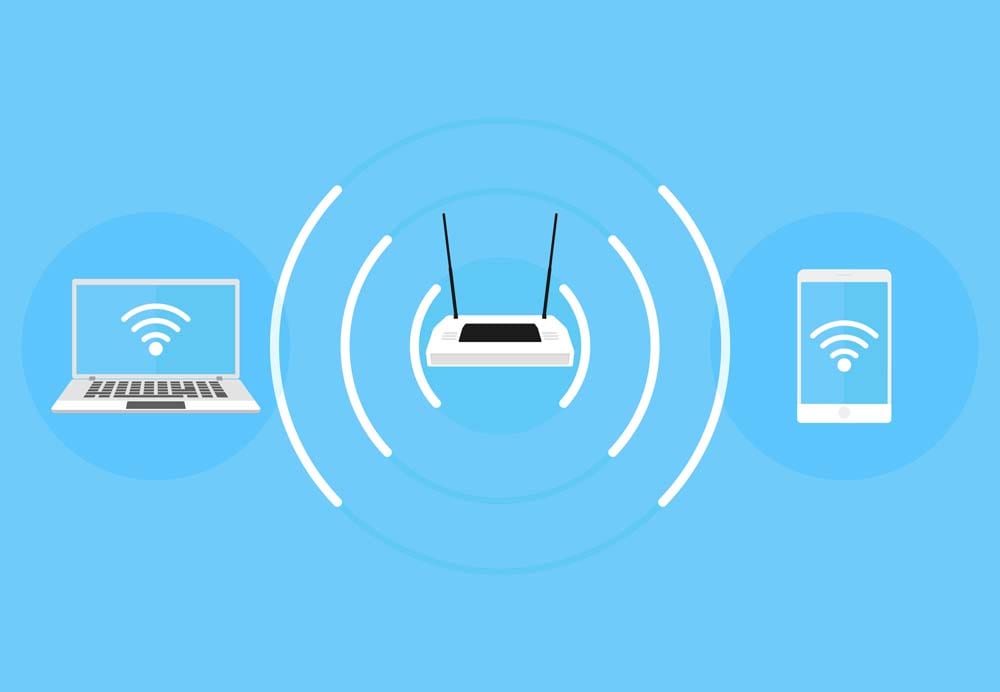In today’s digital age, a strong and reliable WiFi signal is essential for continuous connectivity and productive. Properly positioning Wireless Access Points are crucial in achieving this. The position of your WAP greatly determines the strength and stability of your WiFi signal making it crucial to position it correctly. Let’s explore the importance of WAP devices and how to select the most suitable home access point to get the most wireless connectivity.

The Wap Wireless Access Point is a crucial network device that allows wireless devices to connect to a wired network via WiFi or other related standards. It’s a critical device that allows you to extend the coverage of your wireless network and also eliminate the requirement for massive wires. A WAP receives data from a router via an Ethernet cable and converts the data into a radio signal. This signal can be picked up by WAP devices, providing them with access to the network.
The impact of WAP Placement
A WAP needs to be strategically placed in order to create a powerful and reliable WiFi network throughout your region. The position of the WAP affects the quality, range and strength of the signal on the WiFi network. Putting the WAP in an optimal location can help in reducing interference, enhancing coverage, and enhancing connectivity for users.
Factors that affect the WAP signal strength
There are many factors which can affect the signal a WAP sends your device. They include:
The strength of signal refers to the power of the signals transmitted by WAP.
Range: The longest distance that the WAP can transmit solid and steady signals.
Interference The presence of any obstructions or electronic devices that could interfere with WiFi.
The Top Home Access Point
To ensure the best WiFi performance, choosing the right WiFi provider for your home or office is essential. Take into consideration these aspects when selecting the right access point to your home:
Signal Strength and Coverage Choose a WiFi provider that offers an impressive signal strength and a wide coverage area. This will ensure that the WiFi signal is available in your preferred area, with no dead zones.
Choose a WAP that has technologies that reduce interference. This can include dual-band or tri-band features to make it easier to navigate the crowded WiFi channels.
Ease of Setup and Configuration Make sure you choose a WAP which is easy to set up and set up. Installation processes that are simplified and easy to use reduce the amount of time and effort.
Security Features: Choose WAPs with strong security features like encryption protocols, security settings, and security settings. This will protect your network’s data and assists in securing it.
Scalability: Make sure your WAP is capable of handling the devices you plan on connecting. The capacity of scalable WAPs increases with the network, making them a future-proof purchase.
Optimising WAP placement for maximum performance
Central Location: Position the WAP in a central area to ensure a uniform distribution of WiFi signals throughout the area. This minimizes dead zones and ensures a consistent connection across the premises.
The WAP can be placed at a higher level such as the wall or ceiling. This will help broadcast the signal with ease, giving improved coverage and minimizing obstructions.
Avoiding Interference: Keep the WiFi away from objects or materials that could cause interference, such as cellphones, microwaves, or metal structures. This helps maintain a clean and strong WiFi signal.
Professional Assessment: You may want to consult with IT professionals for a thorough evaluation of your area. They can assist you in determining the best places for WAPs depending on your specific needs.
Conclusion
In the ever-changing technology world, having a reliable WiFi connection is vital. Wireless Access Points are essential in this regard, as they expand your network and offer a reliable WiFi connection. The best performance of WiFi can be attained by positioning your WAP at a suitable location as well as selecting the correct wireless access point.
It is worth investing time and energy in evaluating the available space, understanding factors that influence the strength of WAP’s signal and important features of WAPs. It is possible to maximize the power of your WiFi network by mastering the art of and science behind WAP placement.